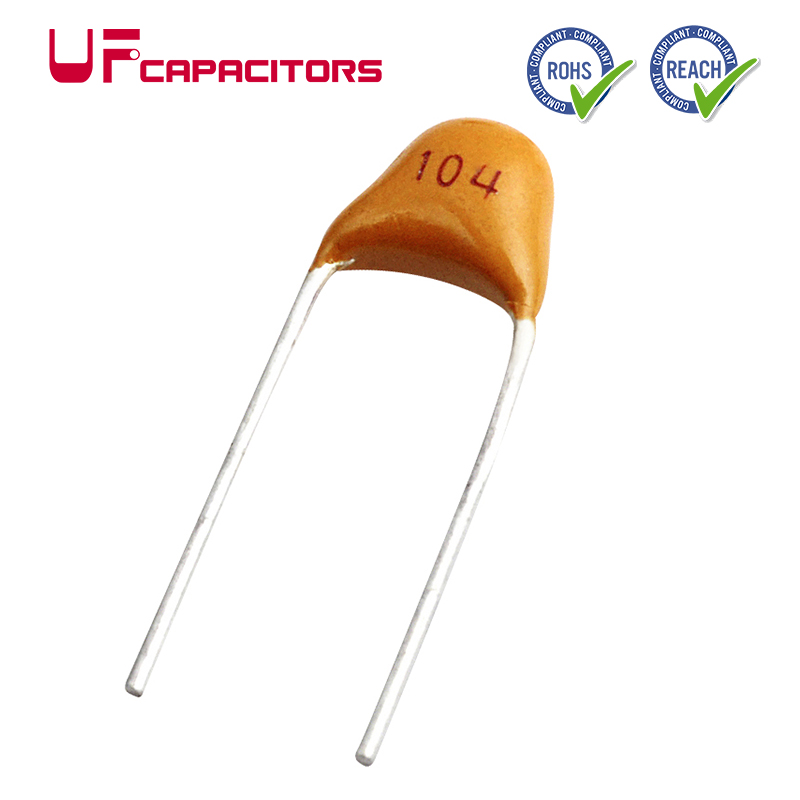- Español
- Português
- русский
- Français
- 日本語
- Deutsch
- tiếng Việt
- Italiano
- Nederlands
- ภาษาไทย
- Polski
- 한국어
- Svenska
- magyar
- Malay
- বাংলা ভাষার
- Dansk
- Suomi
- हिन्दी
- Pilipino
- Türkçe
- Gaeilge
- العربية
- Indonesia
- Norsk
- تمل
- český
- ελληνικά
- український
- Javanese
- فارسی
- தமிழ்
- తెలుగు
- नेपाली
- Burmese
- български
- ລາວ
- Latine
- Қазақша
- Euskal
- Azərbaycan
- Slovenský jazyk
- Македонски
- Lietuvos
- Eesti Keel
- Română
- Slovenski
- मराठी
- Srpski језик
Functional Use of Capacitors
2022-04-06
Functional use of capacitors
1. Knowledge of basic characteristics of capacitors
A capacitor is an element that can store electrical energy (stored charge). Its structure is very simple, mainly composed of two conductors close to each other, with a layer of non-conductive insulating medium sandwiched between them. A simple capacitor can be formed by placing two metal plates parallel to each other without touching each other. Capacitors have the characteristics of blocking DC and communicating AC. Because the two non-contact parallel metal plates that make up the capacitor are insulated, direct current cannot pass through the capacitor, while alternating current can pass through the capacitor.
Charging process: Connect the two ends of the capacitor to the positive and negative magnetic fields of the power supply, respectively, and the power supply current will charge the capacitor. After the capacitor has a charge, a voltage will be generated. When the voltage charged by the capacitor is equal to the power supply voltage, the charging will stop. There is no more current flowing in the circuit, which is equivalent to an open circuit.
Discharge process: When the switch in the circuit is turned off, at the moment when the power supply is turned off, the charge on the capacitor will flow through the resistor, and the direction of the current is opposite to that of the original charging. As the current flows, the voltage between the two cars gradually decreases until the positive and negative charges on the two magnets disappear completely. This phenomenon is called "discharge".
Two important characteristics of the capacitor are prompted: (1) prevent the passage of DC current and allow the passage of AC current; (2) the impedance of the capacitor is related to the frequency of the transmitted signal, the higher the frequency of the signal, the smaller the impedance of the capacitor.
2. Filtering effect of capacitors
The charging and discharging of capacitors requires a process, and the voltage cannot be abruptly changed. According to this characteristic, the capacitor can play the role of filtering or signal transmission in the circuit. The filter function of capacitors refers to the ability to eliminate pulses and noise, which is a very basic and prominent function of capacitors.
3. Capacitor coupling function
The impedance of the capacitor to the AC signal is small and easy to pass, while the impedance to the DC signal is large, which can be regarded as an open circuit. In amplifiers, non-magnetic capacitors are often used as coupling devices for AC signal input and output transmission, that is, to couple the AC signal of the previous stage circuit to the subsequent stage circuit.
4. Functional application of variable capacitors
Due to the adjustable capacitance of the variable capacitor, it is mainly used in circuits that need to adjust the capacitance, such as radio tuning circuits, frequency selection circuits, etc.

1. Knowledge of basic characteristics of capacitors
A capacitor is an element that can store electrical energy (stored charge). Its structure is very simple, mainly composed of two conductors close to each other, with a layer of non-conductive insulating medium sandwiched between them. A simple capacitor can be formed by placing two metal plates parallel to each other without touching each other. Capacitors have the characteristics of blocking DC and communicating AC. Because the two non-contact parallel metal plates that make up the capacitor are insulated, direct current cannot pass through the capacitor, while alternating current can pass through the capacitor.
Charging process: Connect the two ends of the capacitor to the positive and negative magnetic fields of the power supply, respectively, and the power supply current will charge the capacitor. After the capacitor has a charge, a voltage will be generated. When the voltage charged by the capacitor is equal to the power supply voltage, the charging will stop. There is no more current flowing in the circuit, which is equivalent to an open circuit.
Discharge process: When the switch in the circuit is turned off, at the moment when the power supply is turned off, the charge on the capacitor will flow through the resistor, and the direction of the current is opposite to that of the original charging. As the current flows, the voltage between the two cars gradually decreases until the positive and negative charges on the two magnets disappear completely. This phenomenon is called "discharge".
Two important characteristics of the capacitor are prompted: (1) prevent the passage of DC current and allow the passage of AC current; (2) the impedance of the capacitor is related to the frequency of the transmitted signal, the higher the frequency of the signal, the smaller the impedance of the capacitor.
2. Filtering effect of capacitors
The charging and discharging of capacitors requires a process, and the voltage cannot be abruptly changed. According to this characteristic, the capacitor can play the role of filtering or signal transmission in the circuit. The filter function of capacitors refers to the ability to eliminate pulses and noise, which is a very basic and prominent function of capacitors.
3. Capacitor coupling function
The impedance of the capacitor to the AC signal is small and easy to pass, while the impedance to the DC signal is large, which can be regarded as an open circuit. In amplifiers, non-magnetic capacitors are often used as coupling devices for AC signal input and output transmission, that is, to couple the AC signal of the previous stage circuit to the subsequent stage circuit.
4. Functional application of variable capacitors
Due to the adjustable capacitance of the variable capacitor, it is mainly used in circuits that need to adjust the capacitance, such as radio tuning circuits, frequency selection circuits, etc.



